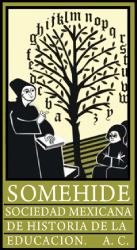The politicization and organization of secondary school students in the city of Sucre 1950-1964
DOI:
https://doi.org/10.29351/amhe.v1i2.276Keywords:
Students, student movements, politicization, Sucre, secondary educationAbstract
The city of Sucre is located south of Bolivia and it is the capital city of the country. It was there that the first university was created in the seventeenth century, and the first Normal Teachers’ School during the early twentieth century. This has given the city a student atmosphere. Due to this situation, we consider the importance of conducting a study on the organization and politicization of secondary school students and their contribution to student movements during the period of the National Revolution. The time frame goes from 1950 to 1964, from a pre-revolutionary period to the end of the MNR’s revolutionary governments. From a theoretical point of view, the study of secondary student movements (MES) is framed, on one hand, in studies on the history of education and the socialization processes of adolescents and young people and, on the other hand, in social history studies. From this perspective, they can be analyzed either as a cultural process of insertion in a certain mass culture that implies a rebellion against an established society or, on the contrary, in the creation of a social group, capable of mobilizing with clearly defined social and political objectives. On the other hand, the secondary school student movements in the city of Sucre had great participation in strikes and marches, either in support of the university or to achieve objectives in their own favor. Since 1950, the political participation of secondary school students was more openly given by the action of different parties with their own ideologies.
References
El Siglo (1964, 8 de noviembre). Sucre, Bolivia.
Fernández, M. (1985). ¿Es tan fiero el león como lo pintan? Reproducción, contradicción, estructura y actividad humana en la educación. Revista Educación y Sociedad, (4), 5-32.
La Capital (1963). Sucre, Bolivia.
La Capital (1964). Sucre, Bolivia.
Larrondo, M. (2013). Lápices de colores: el movimiento estudiantil de Argentina. Buenos Aires: CLACSO.
Lozada, B. (2006). La transformación de la educación secundaria en Bolivia. La Paz: Instituto de Estudios Bolivianos.
Mendoza, F. (2015, 16 de junio). Entrevista personal. Sucre, Bolivia.
Meyer, J. (2008). El movimiento estudiantil en América Latina. Revista Sociológica, (28), 179-195. DOI: http://www.scielo.org.mx/pdf/soc/v23n68/v23n68a7.pdf.
Renovación (1960). Sucre, Bolivia.
Sánchez, J. (2015, 15 de junio). Entrevista personal. Sucre, Bolivia.
Terán, R. (2015, 9 de junio). Entrevista personal. Sucre, Bolivia.
Vanguardia (1950, 26 de marzo). Sucre, Bolivia.
Vanguardia (1950, 23 de abril). Sucre, Bolivia.
Vanguardia (1950, 7 de mayo). Sucre, Bolivia.
Vanguardia (1950, 25 de junio). Sucre, Bolivia.
Vanguardia (1951, 11 de marzo). Sucre, Bolivia.
Zalles, A. (2000). Educación y movilidad social en la sociedad rural boliviana. Revista Nueva Sociedad, (165), 134-147.
Downloads
Published
How to Cite
Issue
Section
License
Todos los contenidos del Anuario Mexicano de Historia de la Educación se publican bajo una licencia Creative Commons Atribución No Comercial 4.0 Internacional (CC BY-NC 4.0), que permite compartir (copiar y redistribuir el material en cualquier medio o formato) y adaptar (remezclar, transformar y construir a partir del material) para fines no comerciales, dando los créditos a los autores y a la revista, tal como lo establece la licencia.
La política de acceso abierto y de licencias con “algunos derechos reservados” no niega la propiedad intelectual ni los derechos de los autores respecto a sus artículos, pues ellos son los titulares, en tanto que el Anuario Mexicano de Historia de la Educación no los reserva para sí ni para la institución editora, ya que se apegan a movimientos de acceso abierto como los Principios y Valores del Sistema de Información Científica Redalyc - Red de Revistas Científicas de América Latina y el Caribe, que pugnan por la eliminación de las políticas de embargo para que el autor retenga los derechos de su obra (principio número 8). Así como las políticas de acceso abierto del Directory of Open Access Journals (DOAJ).
Los autores podrán distribuir su propio material en cualquier otro medio o soporte, siempre y cuando sea para fines no comerciales, informando a los editores que el trabajo será publicado nuevamente y dando el crédito correspondiente al Anuario Mexicano de Historia de la Educación.
La publicación en el Anuario Mexicano de Historia de la Educación, por su carácter gratuito, no da derecho a remuneración económica alguna a los autores, ni a los dictaminadores.
Los lectores podrán reproducir (copiar), comunicar, distribuir o hacer obras derivadas de los artículos o colaboraciones publicados en el Anuario Mexicano de Historia de la Educación en los siguientes casos:
- Para fines públicos.
- Sin fines comerciales.
- Que se reconozca la autoría de la obra y se cite su origen con información completa: Apellido/s del autor, inicial/es del nombre/s. (año de publicación). Título del artículo. Nombre de la revista, volumen (número de ejemplar), página inicial del artículo-página final del artículo. DOI o URL (formato sugerido de acuerdo al estilo APA en su versión más reciente).
El cuerpo editorial del Anuario Mexicano de Historia de la Educación asumirá el compromiso de notificar oportunamente a los autores sobre cualquier cambio de ubicación de los artículos en el sitio (cambio de dirección URL o de conexiones para identificar el artículo).
Los autores, al enviar sus trabajos para su posible publicación, deberán tomar en cuenta los puntos anteriores, mismos que se contemplan en el Acuerdo entre autor y el Anuario Mexicano de Historia de la Educación.












